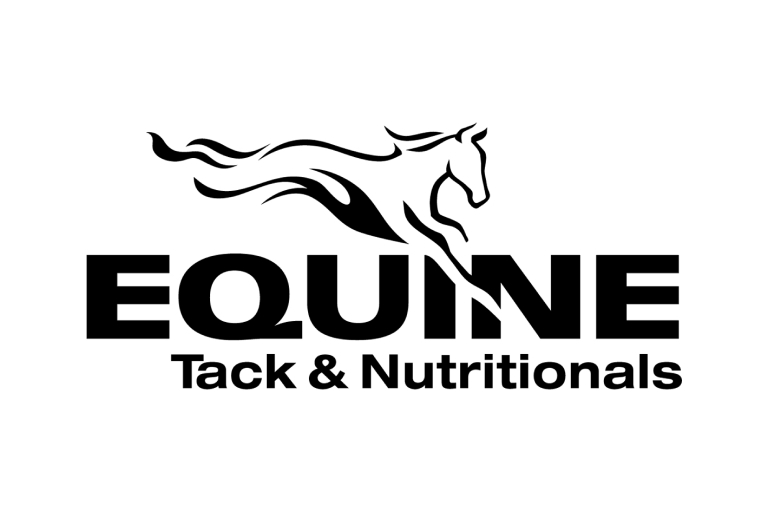Attending a horse show can feel like stepping into a whole new world. We’ve compiled a guide to some sights, sounds, and terms you might come across at equestrian events to get the most out of your experience at the Winter Equestrian Festival.

What types of competition will I see at a hunter/jumper show?
There are three main divisions at a hunter/jumper horse show: hunter, jumper and equitation. In all three, a rider guides a horse over a set course of obstacles in a ring. However, each is scored differently. The jumper discipline is scored based on the objective speed and accuracy the rider has over the course. Hunter and Equitation are based on a subjective judge of form over the course, with hunter classes focusing on the form of the horse and equitation classes focusing on the form of the rider. The main professional events in show jumping, such as the Olympics or Grand Prix events held at WEF’s Saturday Night Lights events are the jumper discipline.
How are jumper events, such as those held during Saturday Night Lights, scored?
Jumper events are based on two measures: the speed at which the horse and rider complete the course and how many jumps they successfully clear. If horse and rider successfully complete the course under the time allowed set by the course designer and also do not knock down any rails on the jumps, then they often move on to a second “tie-breaker” round, called a jump-off. In the jump-off, the riders who went clear in the first round go around a shortened course, and the fastest rider with the fewest rails down win
Glossary - The Horse
A mare refers to an adult female horse. A stallion refers to an adult male horse that is still intact for breeding. Male horses that have been castrated are referred to as geldings, and are the more common of the two male horses in the hunter/jumper world due to their milder temperaments.
The vast majority of horses in hunter/jumper competitions will be one of three variations of color: “bay” which is a brown body with a black mane and tail; “chestnut” which is a light brown body with the same shade light brown mane and tail; or “gray” which is any shade of white or gray. You will occasionally see black horses or horses that are “paint” which is a brown or black body with large patches of white.
Hunter/jumper horses are generally first shown at about five years of age until they are in their late teens to about twenty years of age. “Green” horses are younger and less experienced.
A gait is the pattern of leg movement and pace in which a horse travels. The four gaits, from slowest to fastest, are walk, trot, canter and gallop. Jumping events are done at the canter, occasionally speeding up to the gallop when riders are attempting fast times in a jump-off. The length of the average horse’s stride at the canter is 12 feet.
The gear associated with the horse, including all items it “wears” in order to be ridden, such as the saddle.
The person whose job it is to take care of a horse when not in the ring.
The person whose job it is to teach and help prepare the horse and rider for competition in the ring. Most professionals do not have trainers, and many are trainers themselves to other riders.
The person or corporation under whose name the horse’s title is in. The rider does not need to own the horse to ride it in a competition unless you are in a specific class that dictates it, called an amateur owner class.
Glossary - The Event
The set order in which riders are scheduled to go in the ring and complete the course. Some riders competing with multiple horses in one class will have to have enough room in between their scheduled times to warm up and compete both horses.
The formal term for a rider and horse pair competing in an event. A rider may have two or more “entries” in an event if they have multiple horses competing in it.
The format term for the specific event in which the horse and rider are competing. For example, the Saturday Night Lights “Grand Prix” event is one class.
When a rider and their trainer traverse the course on foot in advance of the class starting. They use this opportunity to plan how they will ride the course for the competition, specifically by physically counting the strides between jumps. Walking the course is only done in “jumper” classes, not hunter or equitation.
The two vertical beams on either side of a jump that hold the horizontal poles (“rails”) in them. They contain jump cups for adjusting the height of the jump. In jumper classes, you will often see brightly colored standards decorated to advertise sponsors of the show on them. In hunter classes, the standards are designed to simulate natural materials, such as trees and logs, which one would see on a traditional foxhunt.
Rails are the wooden poles or planks that go across the jumps and determine its height, and are the part of the jump that the horse actually jumps over. When a horse hits or grazes a rail with his hoof, the rail will fall to the ground.
A type of jump that is a straight up and down fence, with no spread or width.
A type of jump that consist of two sets of standards that are all jumped in one effort in order to test the horse’s ability to jump both high and wide. The spread of an oxer may not exceed its height.
A group of two or more jumps in a row with a very short distance between them. The distance between jumps in a combination is pre-determined by the course designer to fit generally only one or two strides. Combinations are often regarded as the more difficult parts of a course, and can include both verticals and oxers.
A distance or “spot” references the exact place where a horse’s legs lift from the ground to go over a jump. Riders help their horses get to a “good distance” by maintaining an even rhythm and pace as they approach a jump and indicate when to take off. When a horse takes off too far away from or too close to a jump, it can result in the knockdown of a rail and incurred penalties.
The term that refers to a rider’s specific round going around the course with their horse.
The warm-up a horse and rider completes before their round in order to prepare for competition. It takes place in a schooling ring, usually adjacent to the show ring and involves both practicing over jumps and moving at varying speeds. Many horses will often be schooling at the same time as they wait for their turn in the competition ring.
The material on the floor of the riding ring, usually a mix of sand, rubber and synthetic material. It is designed to be comfortable and safe for a horse to walk and jump on while also holding up to varying weather conditions.
Glossary - The Competition
Grand Prix show jumping is a high-level equestrian competition that involves horse and rider combinations competing over a challenging course of jumps. The objective is to clear all of the obstacles without knocking any of them down or incurring any penalties for mistakes or errors.
The Grand Prix show jumping competition typically takes place over two rounds, with the first round being a qualifier and the second round being the final. The course is designed by a course designer, who sets up a challenging and technical track of fences, walls, water jumps, and other obstacles.
In the first round, each rider and horse combination has a set time limit to complete the course, and they must also clear each jump within that time limit. Penalties are incurred for knocking down any of the jumps, refusing to jump a fence, exceeding the time limit, or committing other errors. The top-performing riders and horses from the first round advance to the second round.
In the second round, the riders and horses start with a clean slate, and the scores from the first round do not carry over. The second round is typically more challenging than the first, with a shorter time limit and more difficult obstacles. The winner of the competition is determined by the rider and horse combination that clears the course in the shortest amount of time with the fewest penalties.
Grand Prix show jumping competitions are often part of larger equestrian events and can attract top riders and horses from around the world. The events are typically reviewed by judges who evaluate the performance of each rider and horse combination based on factors such as the time taken to complete the course, the number of faults or penalties incurred.
Nations Cup Competition Format Explained
The Nations Cup is a team competition in showjumping where riders represent their respective countries. The format of the Nations Cup varies depending on the specific event and level of competition. Below is a general overview of how it typically works:
- Teams: Each team consists of 4 riders, with the best 3 scored counting towards the team’s overall result. Some competitions may allow for a reserve rider in case of injury or elimination.
- Rounds: The competition usually consists of two rounds of jumping, with a jump-off round.
- Scoring: Scoring is based on a combination of faults and time. Riders receive faults for knocking down fences, refusals, and other faults. Penalties are also given for exceeding the time allowed for completing the course. The team with the lowest number of faults and the fastest overall time wins.
- Qualification: The number of teams that can compete in the Nations Cup varies, but usually, only the top teams from each region or continent are invited to participate.
- Finals: There may be a final round for the top teams, where they compete for overall Nations Cup title. In some competitions, the Nations Cup may also serve as a qualifying event for major international championships, such as the Olympics or World Equestrian Games.
Overall the Nations Cup is a highly competitive and prestigious event in the world of showjumping with riders and teams representing their countries with pride and aiming for the top spot on the podium.
A variation of any non Grand Prix show jumping event that features increased prize money. Classics are usually held towards the end of a show week, mostly on Sundays.
A speed class is a jumper class in which there is no jump-off round. Instead, jumping faults are penalized by adding four seconds for each knockdown.
Penalizations accrued going around a course. A jumping fault, or when a rail is knocked down when going over the jump, is worth four faults. A time fault is when a rider does not complete the course in the time allowed set by the course designer. For every second over the time allowed, one time fault is allotted. Having a fault in your round disqualifies you from returning for a second round jump-off. Faults are also used to determine final placement in the overall standings of a class—a rider with 4 faults will finish ahead of a rider with 5 faults. If they have the same number of faults, the rider with the fastest time wins.
The time the course designer sets that the course must be completed in before time faults are accrued. This is to encourage a rider to complete the course in a timely fashion while also not accruing jumping faults.
Having a clear or “clean” round means completing the course without accruing any time or jumping faults. If more than one rider does this, it forces a jump-off between clear riders to determine a winner. Going “double clear” means accruing no time or jumping faults in both the first round and the jump-off.
The second round of a jumper class in which all riders with no faults in the first round compete for final placement in an event. It is conducted on an abbreviated version of the first course and is generally the most exciting part of a competition as riders go all out to attempt to have the fastest times with the fewest rails down.
When a horse refuses to go over a jump in the course, usually by stopping or turning away during the approach to it. A first refusal costs a rider 4 jumping faults and the extra time to re-approach it. A second refusal results in elimination from the competition. Some jumps are designed to cause horses to “spook,” or become unsettled if their rider does not ride them confidently, which can cause a refusal. Examples of jumps that test a horse’s trust in his rider are very narrow jumps (sometimes called “skinny” jumps), or jumps with small pools of water underneath them called liverpools.
When a rider elects to not finish the course, usually because they have accrued too many faults to be in the running for prize money in a competition. This is more common at the high level events with larger jumps, as riders will often find it more beneficial to “save their horse for another day” rather than exert them for a competition they know they are out of. A voluntary withdrawal from the rider is usually signaled by a wave to the judge.
When a rider goes over the jumps on a course in a different order than mandated by the course designer, most often because they forgot the course. This results in immediate elimination from the class.
Glossary - Other Equestrian Terminology
A jumping discipline scored by a judge’s subjective score on the horse’s form and manners going around a course of jumps. Courses are simpler than in jumpers and are designed to emulate classic “fox hunts” with fences that resemble natural terrain. Horses that compete in this field are trained to specifically excel at having good form navigating a course instead of having the raw speed and power necessary for the jumper discipline. The rider’s form is not judged during a hunter class.
At most shows one of the highest-level hunter events. A Hunter Derby consists of two rounds. After the first round, the top horses will return for the “handy round” in which they go around a more complicated course that includes challenges such as varying the horse’s speed, going over a jump at the trot, tighter turns, and other tasks to demonstrate the horse’s handiness, versatility, and manners. Hunter Derby courses will also include a few jumps that are higher than the rest, which riders can elect to jump instead of the lower options for bonus points.
A portion of hunter competitions where a judge scores a horse based on its conformation, standing form and presence without any tack on.
A portion of hunter divisions in which all riders in the class ride around the outside of the ring at a walk, trot and canter following the judge’s commands. Also called the “flat class,” no jumping is involved and top finishers are chosen out of a lineup at its conclusion.
A portion of hunter competitions in which a rider jogs on foot alongside their horse from the in-gate to the middle of the ring to demonstrate the horse’s soundness to the judge. This is done just before announcing the winner of a class.
A division scored by a judge’s subjective score of only the rider’s form going around a course of jumps. It takes elements from both hunter and jumper disciplines with jumper-like course design, but hunter-like subjective scoring and an under saddle “flat class.” It is generally more popular among junior riders, for which a number of prestigious championships are held every fall.
The designation of rider type based on age or professional status in the sport. There are three main divisions: junior, amateur and professional. There are classes designated specifically for juniors and amateurs only, but these two groups can also ride in and collect prize money from any class that a professional can ride in, such as a Grand Prix. Some hunter and jumper classes also have classes based on age groups, such as 18-35 year olds.
Any rider who has not turned 18 before December of the previous calendar year.
A rider that is no longer a junior but does not accept sponsorship or monetary gains from their riding
A rider that is no longer a junior and does accept sponsorships or monetary gains. Professionals cannot compete in classes designated for only juniors or amateurs.
A type of equestrian competition that involves the performance of choreographed movements and is judged on the horse and rider’s obedience, flexibility and balance. No jumping takes place.
A type of equestrian competition that combines dressage, show jumping and cross-country jumping.
A type of equestrian competition in which riders (“jockeys”) guide horses around a racetrack solely for the purposes of having the fastest time, for example the Kentucky Derby. No jumping takes place.

































